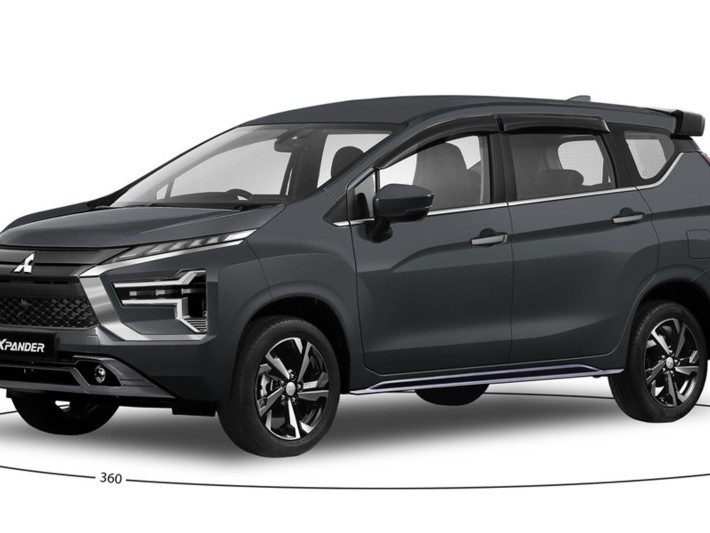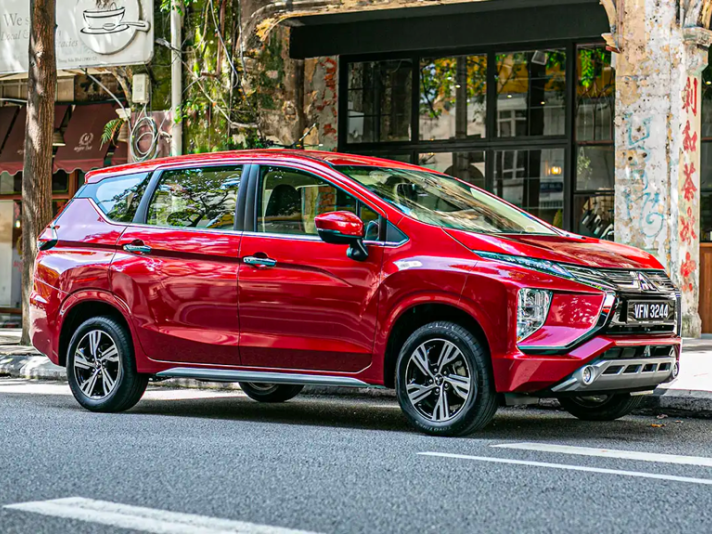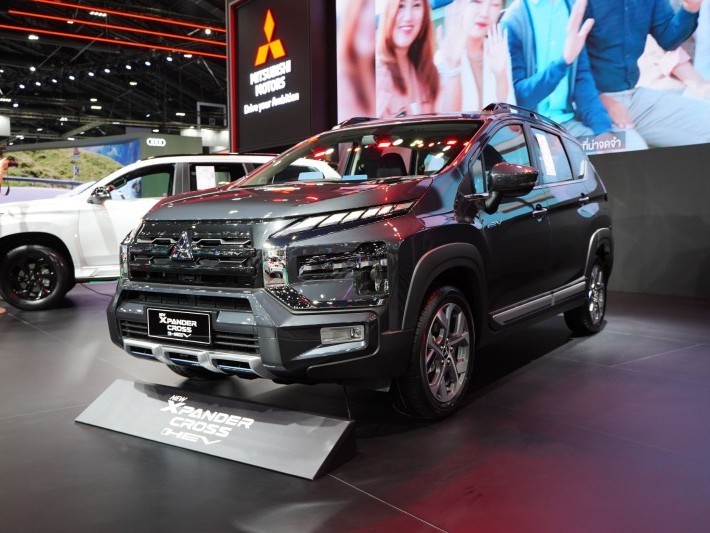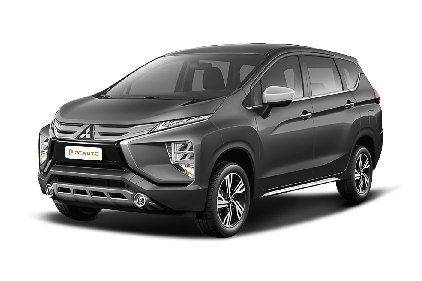Q
how to reset routine maintenance light on Mitsubishi Xpander
To reset the regular maintenance reminder light on your Mitsubishi Xpander, here's what you need to do: First, make sure the vehicle is turned off. Then, press and hold the "TRIP" button on the instrument cluster. While keeping the button held down, turn the key to the "ON" position (don't start the engine). Keep holding the button for about 10 seconds until the maintenance light starts flashing or turns off, then release it – that's it, you're done. This method works for most Mitsubishi models, including the Xpander. If you run into any issues, it's best to check the owner's manual or get in touch with an authorized service center.
The regular maintenance reminder light is there to nudge you to keep up with scheduled vehicle servicing – things like oil changes, filter replacements, and such – to make sure your ride stays in top shape and safe to drive. With Malaysia's hot and rainy climate, staying on top of regular maintenance is especially crucial. It really helps extend your engine's lifespan and prevents component wear and tear caused by the high heat and humidity. If you've got questions about maintenance intervals or specific items, feel free to reach out to Mitsubishi Malaysia's after-sales team. They can give you professional advice tailored to local road conditions and weather.
Special Disclaimer: This content is published by users and does not represent the views or position of PCauto.
Related Q&A
Q
What is the ground clearance of the Xpander 2020?
The 2020 Mitsubishi Xpander has a ground clearance of 205mm, a design that makes it perform exceptionally well on Malaysia's diverse road conditions, handling both city driving and occasional country roads with ease. The higher ground clearance not only improves the vehicle's off-road capability but also effectively prevents the undercarriage from scraping on rough roads, making it particularly suitable for water accumulation section that may appear during Malaysia's rainy season. Ground clearance is one of the key indicators for measuring the practicality of SUVs and MPVs; models typically ranging between 180mm and 220mm can balance comfort and off-road performance. As a 7-seater MPV, the Xpander maintains a spacious interior while also focusing on optimizing the chassis height, giving it a competitive edge among models in its class. For Malaysian consumers, choosing a model with appropriate ground clearance is especially important, as it directly relates to the convenience and safety of daily driving, especially when dealing with areas with poor road conditions.
Q
What is the fuel consumption of the Mitsubishi Xpander Cross 2020?
According to official figures, the 2020 Mitsubishi Xpander Cross has a combined fuel consumption of approximately 6.5 to 6.9 liters per 100 kilometers, though the actual numbers can vary depending on driving habits, road conditions, and vehicle load. It’s powered by a 1.5-liter MIVEC naturally aspirated engine paired with a 4-speed automatic transmission, delivering smooth power and decent fuel efficiency—perfect for Malaysian family daily use. For owners looking to cut fuel costs further, regular vehicle maintenance, keeping tire pressure at the recommended level, and avoiding aggressive driving like sudden acceleration or hard braking can all help boost fuel efficiency. Plus, as a crossover MPV, the Xpander Cross doesn’t just shine in fuel economy; it also offers generous interior space and a higher ground clearance, making it ideal for Malaysia’s varied road conditions. Whether you’re commuting in the city or heading out for a weekend getaway, it handles it all with ease.
Q
How many seats are in the Mitsubishi Xpander 2020?
The 2020 Mitsubishi Xpander is a popular 7-seater MPV in the Malaysian market, featuring a 2+3+2 seating layout that can accommodate 7 passengers. The second-row seats fold down in a 60:40 split, while the third-row seats fold 50:50, offering flexible space configurations to meet different cargo needs. Under the hood, it's powered by a 1.5-liter MIVEC naturally aspirated engine, delivering 105 horsepower and 141 Nm of peak torque, paired with a 4-speed automatic transmission. It focuses on practicality and fuel efficiency, making it a great fit for family users. The Xpander also comes with basic features like a multifunction steering wheel and a touchscreen infotainment system. Its higher ground clearance (205mm) helps tackle some of Malaysia's rougher road conditions. Notably, the Xpander positions itself between compact MPVs and mid-size SUVs in the Southeast Asian market, competing with models like the Toyota Avanza and Honda BR-V. However, its unique exterior design and Mitsubishi's reputation for durability make it a top choice for many consumers.
Q
What size engine is in the Mitsubishi Xpander 2020?
The 2020 Mitsubishi Xpander is powered by a 1.5-liter MIVEC naturally aspirated petrol engine, model 4A91. This four-cylinder unit churns out 105 horsepower (77 kilowatts) and a peak torque of 141 Nm, paired with either a 5-speed manual or 4-speed automatic transmission. Its performance is ideal for daily family use, striking a good balance between fuel efficiency and reliability. This engine is widely used across multiple Mitsubishi models, boasting mature technology and low maintenance costs, making it well-suited for Malaysia's road conditions and climate. As a 7-seater MPV, the Xpander's engine is tuned to deliver strong low-end torque, perfect for city driving and carrying loads, aligning with the Southeast Asian market's preference for durability and practicality. It's worth noting that while naturally aspirated engines aren't as powerful as turbocharged ones, their simpler structure, easier maintenance, and lower long-term running costs are part of why the Xpander remains popular in Malaysia.
Q
Is Xpander 2024 3 cylinder?
Based on the current information, the 2024 Mitsubishi Xpander available in the Malaysian market is equipped with a 1.5 - liter MIVEC four - cylinder naturally aspirated engine, not a three - cylinder configuration. This engine delivers 105 horsepower and 141 Nm of torque, paired with either a 5 - speed manual or a 4 - speed automatic transmission. It focuses on providing smoothness and fuel efficiency for the family car market.
The doubts about a three - cylinder engine might stem from the fact that some brands have adopted three - cylinder technology in recent years for emission reduction purposes. However, the Xpander maintains a four - cylinder layout to ensure power stability. It's worth noting that although three - cylinder engines are smaller in size and more fuel - efficient, they usually require more advanced technical tuning for vibration suppression and high - speed performance. In contrast, the four - cylinder structure still has advantages in terms of durability and smoothness.
Malaysian consumers can make their choices according to their own needs when purchasing. If they prioritize low fuel consumption and are open to new technologies, they can look into three - cylinder models from other brands. If they prefer a more mature powertrain, the four - cylinder configuration of the Xpander remains a reliable option. It is recommended to take test drives to experience the differences.
Q
What is the ground clearance of the Xpander 2024?
The 2024 Mitsubishi Xpander has a ground clearance of 205 millimeters. This figure is relatively high among compact MPVs and allows the vehicle to adapt well to Malaysia's diverse road conditions, including urban roads and the rough terrains in the suburbs. The high ground clearance not only improves the vehicle's passability but also reduces the risk of chassis scratches, especially on flooded roads that may occur during the rainy season in Malaysia.
In addition to the ground clearance, the 2024 Xpander is also equipped with an optimized suspension system, which further enhances driving stability and comfort. For Malaysian consumers, this type of high - chassis MPV is very practical. It can meet the needs of family outings and handle complex road conditions.
If you often need to carry passengers or cargo and also pay attention to the vehicle's passability, the 2024 Xpander would be a great choice. Its space performance and practicality are also worth noting.
Q
Is the 2024 Mitsubishi Xpander a MPV or SUV?
The 2024 Mitsubishi Xpander falls into the MPV (Multi-Purpose Vehicle) category rather than the SUV (Sport Utility Vehicle) category. Its original design aim was to meet the needs of family users for spacious interiors and comfortable riding experiences. It features a three - row seat layout and sliding side doors, which are typical characteristics of MPVs. The Xpander has a relatively high ground clearance and crossover - style exterior kits, making it look somewhat like an SUV. However, in essence, it remains an MPV focused on practicality and versatility.
For consumers in Malaysia, the Xpander is an excellent family vehicle. It offers good comfort and convenience, whether for city driving or long - distance trips. The main differences between MPVs and SUVs lie in their body structures and uses. MPVs prioritize passenger space and cargo - loading flexibility, while SUVs emphasize off - road performance and driving visibility. Consumers can choose the appropriate model based on their actual needs.
The Xpander has always been very popular in the Malaysian market because it combines practicality, economy, and reliability, making it a great fit for local road conditions and family - use scenarios.
Q
What is the fuel consumption of the 2024 Mitsubishi Xpander?
The 2024 Mitsubishi Xpander offers a moderate fuel economy. According to official data, its combined fuel consumption is approximately 6.5 to 7.2 liters per 100 kilometers. The exact figure may vary slightly depending on driving habits, road conditions, and vehicle configurations (such as the 2WD or 4WD versions). This model is equipped with a 1.5-liter MIVEC naturally aspirated engine, paired with a 4-speed automatic or 5-speed manual transmission. The power is tuned to meet the practical needs of families.
For Malaysian users, the Xpander's fuel consumption is suitable for daily city commuting and medium - to short - distance trips, especially considering the common traffic congestion in the local area. It is recommended to perform regular maintenance (such as replacing the air filter and spark plugs) to optimize fuel efficiency. In addition, if you want to further reduce fuel consumption, you can try some fuel - saving driving techniques like smooth acceleration and reducing idling time.
Similar models in the same class, such as the Toyota Avanza or Honda BR - V, have a comparable fuel economy. However, the Xpander has an edge in terms of space flexibility and cost - effectiveness, making it a great choice for family users who value practicality.
Q
How to open the hood of Xpander 2024?
To open the hood of the 2024 Mitsubishi Xpander, first, sit in the driver's seat. Locate a handle with a hood icon near the driver's side foot area. Usually, it's located at the lower - left of the steering wheel or on the side of the dashboard. Pull this handle firmly, and you'll hear the sound of the first hood lock releasing. Then, walk to the front of the vehicle, reach your hand into the gap in the center of the front edge of the hood, and you can feel a lever for the secondary safety lock. Push the lever to the right and gently lift the hood to fully open it. It's recommended to ensure the vehicle is turned off and parked on a flat surface during the operation for safety.
It's worth noting that the hood opening methods of Xpander models from different years may vary slightly. The 2024 model uses a double - lock mechanism to prevent the hood from popping open accidentally while driving, which is also the standard safety design for most new cars nowadays. If you have difficulty opening the hood, don't force it. Check if both locks are fully released. Regularly applying lubricant to the lock parts can also keep the mechanism running smoothly. Understanding these details can help car owners better perform basic maintenance tasks such as checking the engine oil and coolant in daily life.
Q
What is the safety rating of the Mitsubishi Xpander 2024?
As of 2024, the safety rating of the Mitsubishi Xpander has not been officially announced by ASEAN NCAP or other major global evaluation institutions (such as Euro NCAP). However, referring to the performance of the 2023 model, the vehicle received a 4-star rating in the ASEAN NCAP test, mainly thanks to its standard basic safety features like dual airbags, ABS anti-lock braking system, and Electronic Stability Control (ESC). For Malaysian consumers, the practicality of the Xpander, such as its 7-seater layout and high ground clearance, is quite popular among family users. However, if you have higher requirements for safety performance, you can pay attention to models in the same class, such as the Toyota Veloz or the Honda BR-V, both of which promote themselves with a 5-star safety rating. It's worth noting that while safety ratings are important, actual driving safety depends more on driving habits and regular maintenance. It is recommended to test-drive the vehicle before purchasing to experience its dynamic performance and to check the convenience of the after-sales service network. Mitsubishi has a relatively well - established dealer system in Malaysia, which provides a guarantee for subsequent maintenance.
Latest Q&A
Q
How far can a Honda CR-V go on a full tank?
According to official Honda CR-V specs, the fuel tank holds about 58 liters. Actual range depends on the trim and driving conditions, but generally, the 1.5L turbo model gets around 7.5L/100km combined, so you’re looking at roughly 770km per fill-up. The hybrid version is even thriftier at about 5.5L/100km, pushing range up to around 1050km. Of course, real-world range varies—your driving style, road conditions, and how much weight you’re hauling all play a part. Highway cruising at a steady speed will be more efficient, while stop-and-go city traffic will drink more fuel. For Malaysian drivers, the hot weather means AC is cranked most of the time, which can nudge fuel consumption up a bit. To keep things efficient, regular maintenance is key—check your tire pressure and oil condition regularly. And let’s not forget: planning your route smartly and avoiding aggressive acceleration or hard braking can also help stretch that tank a little further.
Q
Is the Honda CR-V good for long distance?
The Honda CR-V is a great SUV for long drives, especially performing exceptionally well on Malaysia's varied road conditions. Its 1.5-liter turbocharged engine delivers plenty of power along with good fuel efficiency, making it ideal for extended highway stretches. The suspension is tuned more for comfort, effectively absorbing road bumps and reducing driver fatigue during long journeys. The cabin is spacious, with ample rear legroom and a large trunk—perfect for family trips or hauling lots of luggage. The seats offer solid support and nice bolstering to keep everyone comfortable too. On top of that, the CR-V comes with Honda Sensing, which includes adaptive cruise control and lane-keeping assist—features that really boost safety and convenience on long drives. For Malaysian drivers, the CR-V’s reliability and easy maintenance are big pluses. The local dealer network is well-established, and parts are readily available—all important things to consider for road trips. If you often drive cross-state or go on long road adventures, the CR-V’s all-around performance is definitely trustworthy. Just remember to regularly check your tires and brakes to keep things safe out there.
Q
Should I buy a high mileage Honda CR-V?
Buying a high-mileage Honda CR-V requires considering factors like condition, maintenance history, and price. As a generally reliable SUV, the CR-V's engine and transmission can hold up well even with higher miles if properly maintained. However, it's crucial to check for excessive wear on the chassis, suspension, and drivetrain—especially since Malaysia's rainy climate can cause chassis corrosion issues. In the Malaysian market, used CR-Vs hold their value relatively well, so a high-mileage one can still be a solid pick if priced right and in good shape. Just make sure the seller provides full service records and arrange for a professional mechanic to inspect it. Also, the CR-V stands out for fuel efficiency and practical space among its class, making it great for families. But higher-mileage units may need more frequent upkeep, so budget for replacing wear items like shocks, tires, and the timing belt. If your budget allows, compare with lower-mileage used CR-Vs or other brands in the same segment to ensure you get the best fit.
Q
How many miles can a BMW Series 5 last?
The BMW 5 Series, as a luxury sedan, can typically clock up 200,000 to 300,000 kilometers or more with proper care and maintenance. Its actual lifespan really hinges on your driving habits, how often you service it, and let's not forget Malaysia's road conditions and climate. Sticking to regular oil changes, swapping out filters, maintaining the brake system, and following the manufacturer's recommended service schedule will definitely help your 5 Series go the distance. Malaysia's hot and humid weather can take a toll on rubber components and electronics, so it's smart to keep an eye on those parts. Also, using genuine or high-quality parts and steering clear of cheap engine oil will go a long way in keeping your car performing well and reliable. The 5 Series is known for its solid engineering and durability, and plenty of owners have kept theirs running strong for over 15 years with good upkeep. If you're planning to hold onto it for the long haul, I'd recommend regular professional check-ups at authorized service centers to make sure it stays in top shape.
Q
What is the diesel engine in the BMW 5 Series 2024?
The 2024 BMW 5 Series in the Malaysian market is expected to come with an upgraded B47 2.0-litre four-cylinder turbocharged diesel engine. Renowned for its efficiency and low emissions, this powerplant likely delivers between 190 to 200 horsepower and a robust 400 Nm of torque. Paired with the 8-speed Steptronic transmission, it strikes a solid balance between performance and fuel economy, making it a great fit for both long highway drives and city commutes around Malaysia. BMW's diesel tech focuses on clean efficiency, using common-rail injection and variable turbocharging to meet EU6d emission standards, while keeping maintenance costs relatively reasonable. If you're considering a diesel, it's worth keeping an eye on the Malaysian government's policies regarding diesel vehicles, like road tax and potential changes to fuel subsidies. That said, the diesel engine's strong torque really shines in tropical climates and hilly terrain. Rivals like the Mercedes E-Class or Audi A6 offer similar diesel options too, so it's smart to test drive and compare based on your personal driving style and budget.
View MoreRelated News

Mitsubishi Xpander On-Road Price: The Complete Pre-Purchase Guide
JamesApr 9, 2025

Mitsubishi Xpander Redesign: 4AT+1.5L Power Dated, Only 2 Safety Airbags!
JohnSep 24, 2024

Mitsubishi Xpander: Priced at RM 100,980, a perfect combination of comfort, spaciousness and fashion
LienMay 30, 2024

Bangkok Motor Show: MITSUBISHI XPANDER CROSS priced at 946,000 Thai Baht
Kevin WongMar 26, 2024

Mitsubishi brings Xpander and Xpander Cross HEV models to 2024 Bangkok International Motor Show
AshleyMar 18, 2024
View More
















Pros
Cons